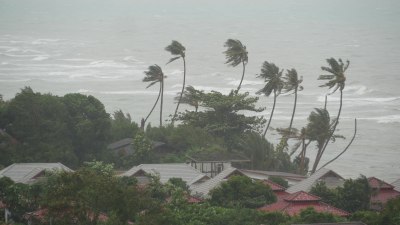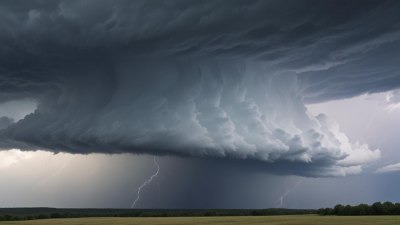Why Weather Changes Faster Near the Equator The Hidden Drivers
Discover the reasons behind rapid weather changes near the equator, exploring key drivers and effects.

Image by boyarkinamarina on Freepik
Understanding why weather changes faster near the equator requires an exploration of the unique atmospheric, geographical, and oceanographic conditions that this region experiences. The equator is known for its consistent warmth and high humidity levels, which contribute to rapid weather fluctuations. In this article, we delve into the factors that influence these shifts and their implications for the environment and communities living in these areas.
The Climate of the Equator
The equator is characterized by a tropical rainforest climate, featuring warm temperatures and high humidity throughout the year. The mean annual temperature hovers around 25 to 28 degrees Celsius (77 to 82 degrees Fahrenheit). Due to its position, the equator receives consistent solar radiation year-round, resulting in minimal seasonal variation in temperature. This consistent heat fuels localized weather phenomena, leading to more rapid and abrupt changes in weather conditions compared to regions farther from the equator.
Humidity and Convection
High humidity levels are a significant aspect of equatorial weather patterns. The abundance of moisture in the atmosphere sets the stage for convective processes. As warm, moist air rises, it cools and condenses, forming clouds and potentially leading to thunderstorms or heavy rainfall. This process, known as convection, can happen rapidly, resulting in quick changes in weather. The intense solar heating at the equator enhances these convective currents, making sudden downpours and unpredictable weather more common.
Trade Winds and Tropical Convergence Zones
The dynamics of trade winds play a crucial role in weather patterns near the equator. The northeast and southeast trade winds converge at the Intertropical Convergence Zone (ITCZ), a belt of low pressure that encircles the globe. This convergence results in rising air that enhances cloud formation and precipitation. The position of the ITCZ shifts with the seasons, oscillating north and south of the equator, which can lead to significant variations in rainfall and weather patterns. These fluctuations can occur rapidly, sometimes within days, leading to swift changes in weather conditions.
Topography’s Influence on Weather
The varied topography of equatorial regions can also significantly influence weather patterns. Mountain ranges, valleys, and plateaus can alter local weather conditions by affecting wind patterns and moisture distribution. For example, as winds rise over mountains, they cool and precipitate on the windward side, creating wetter conditions, while the leeward side experiences drier weather. This phenomenon, known as orographic lifting, can lead to stark contrasts in weather within short distances.
Ocean Currents and Their Effects
Equatorial regions are influenced by ocean currents that also contribute to rapid weather changes. Warm ocean waters from the equator create a condition known as El Niño, which can lead to significant alterations in weather patterns not only near the equator but globally. Conversely, La Niña events, characterized by cooler ocean temperatures, can also influence weather patterns, causing variations in rainfall and storm frequency. These oceanic patterns can cause fast shifts in local weather, reflecting the interconnectedness of marine and atmospheric conditions.
Climate Change and Its Impacts
Recent studies indicate that climate change is affecting the dynamics of equatorial weather patterns. Rising global temperatures are likely to intensify the convective processes that dominate equatorial weather, leading to more frequent and severe weather events, such as heavy rainfall and storms. Furthermore, changing sea surface temperatures can alter the behavior of ocean currents, affecting precipitation patterns and enhancing the variability of weather. The implications of these changes are profound, affecting not only local ecosystems but also the livelihood and safety of communities in equatorial regions.
The Role of Local Ecosystems
The rich biodiversity found in equatorial regions also plays a role in weather dynamics. Dense forests and tropical vegetation release moisture into the atmosphere through a process known as transpiration. This additional moisture can enhance local precipitation, impacting weather patterns. Moreover, the temperature and moisture levels of these ecosystems can influence cloud formation and storm development, further contributing to the rapid changes experienced in equatorial weather.
Urbanization and Its Effects
The rapid growth of urban areas in equatorial regions has also influenced weather patterns. Urban heat islands, created by asphalt and concrete, increase local temperatures and can enhance convective activity, leading to more thunderstorms and rainfall in cities compared to surrounding rural areas. Additionally, changes in land use and natural habitats can disrupt local wind and precipitation patterns, contributing further to the rapid shifts in weather.
In summary, the fast changes in weather near the equator arise from a complex interplay of geographical, atmospheric, and oceanic factors. The unique characteristics of equatorial climates, driven by consistent solar heating, high humidity, and localized convection, contribute to unpredictable weather patterns. The influence of trade winds, topography, and ocean currents, along with the effects of climate change and urbanization, highlight the intricate relationship between the environment and weather. Understanding these dynamics is essential for predicting weather changes in equatorial regions and preparing for their impacts on people and ecosystems alike.











